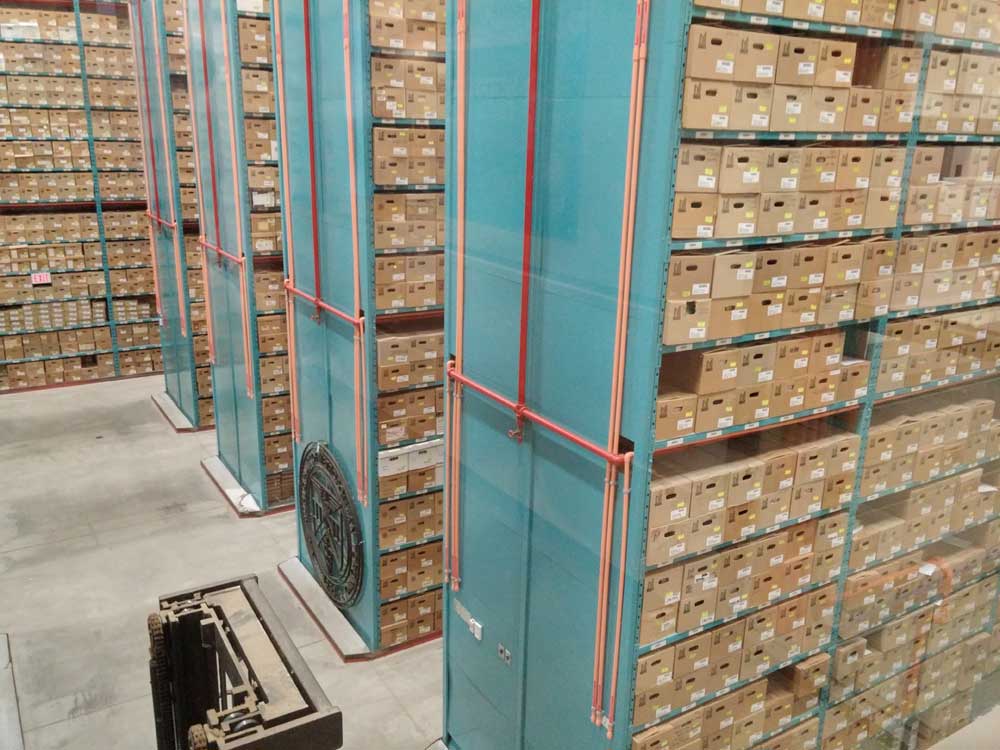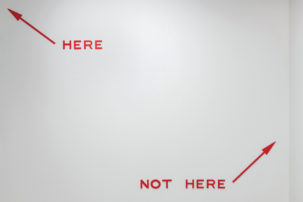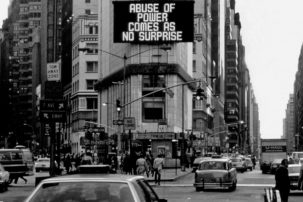Note to the reader: I am using this regular column to think out loud in public about questions and controversies arising from my current research for a book about contemporary Indigenous art from 1980 to 1995.
I have been thinking a lot lately about my dependence, as a writer and teacher, on exhibition catalogues. I am particularly wondering whether the two principal and often competing aims of exhibition catalogues—to serve as a supplement to the exhibition and to serve as a document of the exhibition—ought to be reconsidered in the digital age.
This came to a head for me while trying to assemble the list of eight texts on Indigenous art for my previous column. The process forced me to confront the extent to which I often elide the distinction between catalogues and exhibitions, especially once the exhibition has ended. What made this evident was that, in a number of cases, I wanted to choose essays for my list from catalogues of exhibitions that I had already discussed in a previous column on exhibitions. Revisiting those earlier columns forced me to see that I sometimes depended on catalogue texts to represent the exhibitions in the first place. This wasn’t a problem in itself—many of those shows used catalogue essays to define the thesis of the exhibition—but simply going back to the texts again would have been redundant.
An example is my choice to include Marcia Crosby’s “The Imaginary Indian” in my last column instead of her essay “Nations in Urban Landscapes.” Both essays are excellent, but I would say the latter had a bigger impact on me, although it is lesser known. This is only because I had already encountered the idea of the “Indian” as a construct of colonial ideology that Crosby explored in “The Imaginary Indian,” but the questions raised in the “Nations in Urban Landscapes” when I first encountered them back in 1997. They were challenging to consider and spoke to my own experiences as someone who has, with a few exceptions, grown up in and chosen to live in cities.
But when I wrote about the exhibition “Nations in Urban Landscapes,” I used a quote from Crosby’s essay to represent the thesis of the exhibition. Revisiting the essay would have been repetitive, something I have tried to avoid in the column in order to make room for as many different examples and perspectives as possible. Given that, I happily chose “The Imaginary Indian,” which has had a wide influence and anchored the critique of the “Indian” as colonial construction in new and very specific circumstances.
Despite being able to work around the issue in that case, it left me considering the difference between catalogues and exhibitions, and also between catalogues and archival holdings.
I have been spending a lot of time in archives lately, in many cases at last seeing photographic documentation of exhibitions that I had visited decades ago, or, in a surprising number of cases, had never seen in person at all. Two 1992 exhibitions loomed especially large in my imagination: “Land, Spirit, Power” at the National Gallery of Canada and “Indigena” at what was then the Canadian Museum of Civilization. As I mentioned in a previous column, these exhibitions signalled major institutional shifts in the Canadian museum landscape. But my own relationship to them was eclipsed by a personal tragedy: my mother died in August 1991 and I spent most of the following year coming to grips with the reality of that. I heard and read about the shows, and caught “Indigena” when it came to Winnipeg, but that was all.
Over the years I have taught courses on curating and on contemporary Indigenous art. In the latter, I have never failed to mention both shows, and at times, I’m sure I have assigned texts from both catalogues. What I never had, in all this time, is a mental picture of what “Land, Spirit, Power” actually looked like as an exhibition. Or, for that matter, what “Indigena” looked like in its first venue. Yes, there were a couple of photos published in Scott Watson’s interesting Spring 1993 feature article on the two shows for Canadian Art, “Whose Nation?,” but these offer only a tantalizing hint.
The more archives I visit, the odder the contrast seems to be between the relative obscurity of the archival documentation and the public accessibility of catalogues and reviews. There is certainly much in an exhibition archive that one could argue is rightly kept from the kind of full public view given to catalogues; correspondence between artists and curators, for example. Also, as anyone who has spent day after day in archives knows, 98 per cent of the material is simply too boring to merit wide dissemination. You have to wade through a lot of loan agreements, conservation reports and shipping forms to find the interesting stuff.
Among the most valuable material for me has reliably been the photographic documentation of the exhibitions. I am writing, after all, not only a history of artworks, but also a history of exhibitions. How they functioned as exhibitions matters to me and, with the rise of interest in the curatorial process itself, I suspect this more than a personal quirk.
During the period I am looking at, most of this documentation would have been either in the form of 35-mm slides or black-and-white photographs. Often tremendous care was taken in producing the black-and-white photographs, since these were typically what would be reproduced in catalogues before the cost of colour printing came down. The 35-mm slides would be used by both artists and galleries for grant applications and exhibition proposals. There were no digital cameras back then, or websites upon which to post digital images.
Although these forms of documentation may all seem too obvious to be worth noting to artists and curators of my generation, I mention them because of an experience that I had with a young curatorial assistant at a gallery recently. When she had trouble finding photographic documentation of the exhibitions, I suggested she look for binders of slides. She found those and, opening one of the binders up on the desk, asked, “How are you supposed to look at these?” After I listed all the ways one might view a 35-mm slide, she was eventually able to track down a little hand-held slide viewer, and we took turns having the unique, oddly 3-D experience of looking at slides that way.
The two main reasons photographic documentation of exhibitions is usually left out of exhibition catalogues are largely practical.
The first is that, given the expense of catalogue production, when there is an opportunity for images, the curator logically chooses to privilege images of the work over wider installation views.
The second reason is that it has been customary to have the catalogue ready for the exhibition opening, meaning that the catalogue will have already been produced before the exhibition is mounted—or, if there is a time crunch, the catalogue will be at press during installation and arrive just before the opening. The logic is easy to understand because the opening and run of the exhibition is the gallery’s main opportunity to distribute the catalogue, whether it is a free pamphlet or a handsome book. A curator at another institution once told me that his bosses would have his “balls off” if the catalogue wasn’t ready by the opening. I never heard it put quite that colourfully while I was at the AGO, but the sentiment was familiar.
The rush to get the catalogue out also sometimes means that new work created for an exhibition never makes it into the catalogue at all. This is especially the case since the advent of installation art, where a work might be made specifically for a space in an exhibition. Think, for example, of Rebecca Belmore’s brilliant installation Mawu-che-hitoowin: A Gathering of People for Any Purpose, which was completed just before the opening of “Land, Spirit, Power” and existed in the catalogue only as a suggestive photograph of the artist seated at a conference table.
In many scenarios, you find writers writing about work they have only seen pictures of or, worse, only heard described by the artist. I recently wrote an essay for Jimmie Durham’s upcoming exhibition, “Jimmie Durham: God’s Children, God’s Poem,” at the Migros Museum in Zurich. The exhibition opens August 26, but because of the lead time necessary for translation, editing and design, the copy was due in the first week of April. I made a point of visiting Durham’s studio for nine days in the middle of March, but at this point none of the works were complete. I dealt with this by focusing the essay on the process of making that I had observed and being upfront about the fact that I had not seen the completed works. I am happy enough with the result, but this is the sort of strategy that only works so often.
Oddly enough (okay, it was a bit of a nightmare) I had two other catalogue essays due at the start of April for exhibitions in Toronto. In each of these cases, the institutions chose to complete the catalogues after the exhibitions, and I was able to see both before undertaking my essays. I’m not sure to what extent this is becoming a trend. I assume that some contemporary art galleries, whose primary audience is local and tightly wired in to art-world goings on, have concluded that the catalogues will belatedly find their audience. Still, I can’t see an approach like this working for bigger institutions, whose audience is wider and often weighted toward tourists, and who count on impulse purchases as visitors exit through the gift shop.
I suspect the problem of writing in advance of the exhibition must remain a vexing issue for now. But what about the documentary aspect of the catalogue? The long history of this agenda is built right into the name “catalogue” itself. At one time, it was often the case that a catalogue of an exhibition was just that: a permanent record listing all the works in the show. Anything beyond this—artist’s biographies or an essay—were a kind of lucky bonus. As conservative as this agenda sounds, it served a practical purpose prior to the Internet.
The idea of the catalogue as a practical document for other researchers has slipped far from the minds of many curators, where its ability to supplement the exhibition and create discourse around it has become central. This has become all the more important with the rise of curating and the waning of serious criticism. In too many cases, the catalogue is the only serious discourse around an exhibition. Or, worse still, it fails to even do that. I’m sure I’m not the only one who has been unable to make it to the end of a plodding, uninspired walkthrough of the works in an exhibition that reads more like a curatorial obligation dutifully executed than a passionate engagement with the art.
But whatever curators intend, the catalogue does, as I have already suggested, eventually end up standing as a key document for future researchers. Given that, as a document, a catalogue so often fails to actually visually document the show itself, perhaps we should rethink the visual documentary aspect in the digital age?
Of course, this is already happening as galleries large and small get material up on their websites, although in many cases these materials are far from comprehensive. Often a gallery or museum website is still treated more as a public relations and advertising platform than a serious component of the curatorial project. This may seem a moot point in a world where blockbuster exhibitions already blur the line between curatorial thesis and marketing campaign, but I think it really matters that institutions that have been given the task of taking art seriously do so online as well as off.
This could range from a minimum standard of just reliably getting complete sets of installation photographs online to building virtual versions of exhibitions, or, well, probably a whole bunch of things that I am not tech-savvy enough to imagine. But even I can see that there are things that can be done online that can’t be done in print. There are already interesting models out there, but often they are treated as frills or gimmicks—at best merely educational. Don’t get me wrong; I actually love the educational potential. I can imagine all sorts of things I could do as a teacher with a virtual tour of “Land, Spirit, Power,” “Beyond History” or “Indigena.”
At the same time, though: as an academic researcher, it has been incredibly valuable to see exhibition documentation. I think it would be terrific if it became as much a matter of course to get important shows up online as it was to produce a catalogue.
There are many challenges, of course, to putting exhibition images online. These range from the reluctance of museums and artists to put good-quality images online for fear of copyright infringement to the long-term costs of keeping images up indefinitely, especially as older technologies become obsolete. One theme that has emerged from my conversations with archivists is the challenge even large institutions face in preserving and updating old media. The sense I’ve gotten is that if you want your email correspondence and other digital files preserved for posterity by an institutional archive, your best bet still seems to be to print them out and stick them in a file folder.
We will make our way over these various hurdles by trying new things and seeing what works. For my part, I think that I am going to try to convince some galleries to work with me to virtually recreate some of the important shows I have written about in this column, and some funders to help out with some money. I’ll let you know how that goes.
Richard William Hill is Canada Research Chair in Indigenous Studies at Emily Carr University of Art and Design in Vancouver. If you have advice, information, documents or anything else that might help him with his research on Indigenous art from 1980 to 1995, he would be grateful to hear from you: richardhill@ecuad.ca. Thanks to the many people who have already been in touch.

 The storage area of the Archives of Toronto. Photo: Richard William Hill.
The storage area of the Archives of Toronto. Photo: Richard William Hill.







